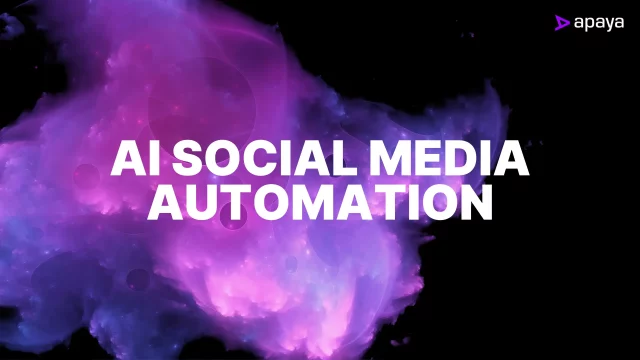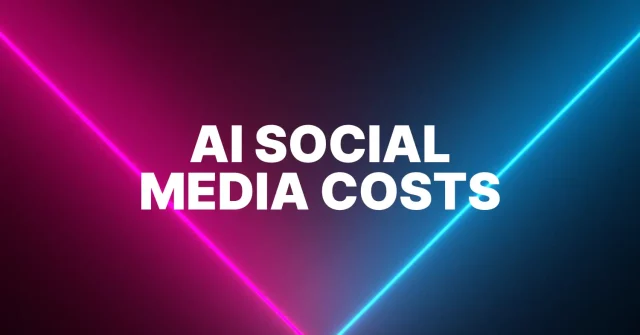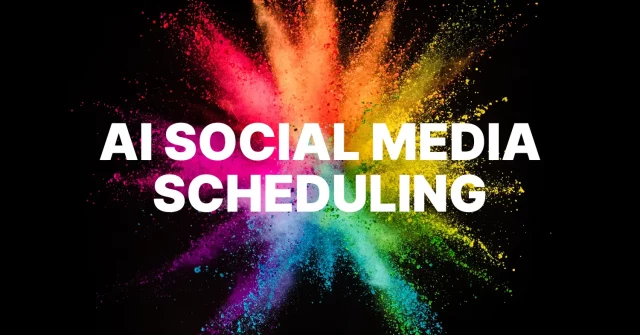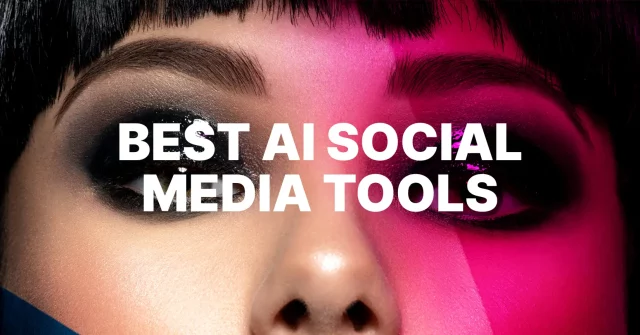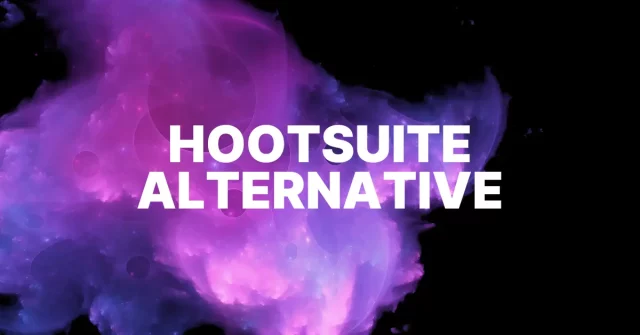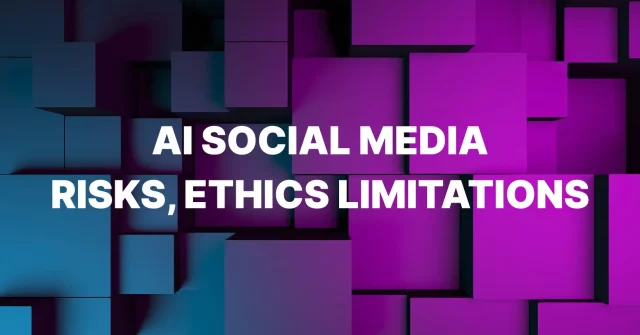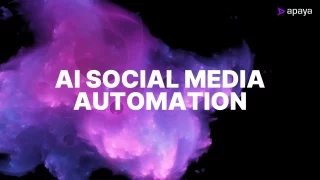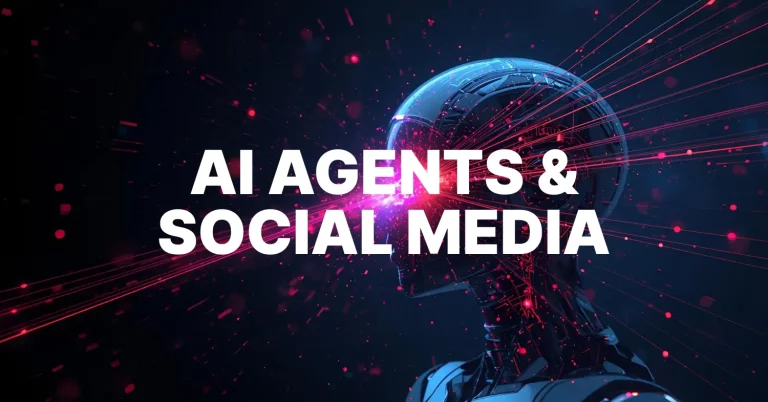
Autonomous AI Agents for Social Media Management
Written by: Tim Eisenhauer
Last updated:

“The future is already here — it’s just not evenly distributed.”
– William Gibson
The day I realized my social media manager was basically a very expensive scheduler.
Picture this: It’s 2019, and I’m paying someone $4,000 a month to manage our previous company’s social media. Nice person, great at making graphics with inspirational quotes nobody asked for. But one day, I tracked what they were doing.
Monday: Schedule posts for the week.
Tuesday: Check analytics, say “hmm, interesting.”
Wednesday: Schedule more posts.
Thursday: Panic because engagement is down.
Friday: Schedule posts about the weekend.
I’m watching this pattern repeat week after week, and it hits me—I’m not paying for strategy. I’m paying for someone to be a human version of Hootsuite with anxiety.
When I asked about our content strategy, they pulled up a spreadsheet that said “Post motivational quote on Monday, industry news on Wednesday, funny meme on Friday.” That was it. That was the whole strategy. We were following a template that could’ve been created by a moderately intelligent hamster with a calendar.
Three months later, I let them go. Not because they were bad at their job, but because I realized the job itself was broken. We weren’t managing social media, we were just feeding the beast on a schedule and hoping something good would happen.
That’s when I started calculating the real ROI of automation versus human management and realized I was hemorrhaging money.
Fast forward to today. That’s when I started researching AI agents for social media automation. And holy hell, it was like discovering that while I’d been riding a horse to work, everyone else had invented teleportation.
What is an autonomous AI agent?
An autonomous AI agent is a software system that independently makes decisions and takes actions to achieve specific goals without constant human intervention. Unlike traditional tools that follow pre-programmed instructions, AI agents analyze data, learn from outcomes, adjust strategies in real-time, and execute complex workflows autonomously. In social media management, these agents can create content, optimize posting schedules, analyze performance, and pivot strategies based on engagement metrics—essentially acting as a digital marketing strategist that works 24/7.
This goes far beyond traditional AI scheduling tools that just post at predetermined times—agents actually think and adapt.
Now, let me break this down in terms that won’t make your brain melt.
An AI agent isn’t just another tool in your marketing toolbox. It’s the contractor who uses all the tools to build the damn house while you’re sleeping.
Think of it this way:
- Traditional tools are hammers and screwdrivers—useful, but they need you to operate them
- Schedulers are alarm clocks—they do what you tell them, when you tell them
- Autonomous AI agents are like hiring a strategic orchestration expert who never sleeps, never complains about Monday mornings, and learns from mistakes
These intelligent agents don’t just execute tasks; they make decisions. Real, strategic, goal-oriented AI decisions that would make your average middle manager sweat bullets.
It seems like most people don’t get this yet. They think AI agents are fancy schedulers with better graphics. Wrong. These are autonomous systems that use workflow automation not as a feature, but as their default operating system. They’re not waiting for instructions; they’re actively pursuing objectives.
You probably think I’m overselling this. But remember when smartphones first came out and people said “it’s just a phone with a camera”? Yeah, that aged well.
Scheduler vs. agent: the key difference is decision making.
Here’s a story that’ll make this crystal clear.
Two companies, same industry, same budget. Company A uses a scheduling tool. Company B uses an autonomous AI agent.
Company A’s Monday:
- Human creates content
- Human analyzes best posting times
- Human schedules posts
- Human hopes for the best
- Tuesday: Human checks analytics, sighs deeply, repeats process
Company B’s Monday:
- AI agent analyzes weekend engagement patterns
- Notices posts about sustainability got 3x normal engagement
- Generates 5 more sustainability-focused posts
- Schedules them for optimal times based on audience activity
- Adjusts Tuesday’s content strategy based on Monday’s early results
- Sends human a summary while they’re still in bed
The difference? Company A is following orders. Company B’s AI is giving them.
It sounds like Company B is living in the future, but this is happening right now. The technology exists. Most companies just don’t know about it yet, or they’re too scared to trust a robot with their brand voice.
Here’s what separates a scheduler from an agent:
Scheduler says: “Post at 2 PM as programmed”
Agent decides: “Engagement peaks at 2:17 PM on Tuesdays for tech content, adjusting schedule”
Scheduler says: “Thursday’s post is ready”
Agent decides: “Thursday’s planned post is similar to Monday’s poor performer, creating alternative”
Scheduler says: “Campaign complete”
Agent decides: “Campaign underperformed by 23%, initiating A/B test with new angles”
One is a microwave that beeps when your food is done. The other is a chef who tastes the soup and adjusts the seasoning.
The workflow of a social media AI agent.
Let me walk you through how these digital project managers work. And no, it’s not magic, though it might as well be compared to what most of us are doing now.
Step 1: Goal Definition
You tell the agent your objective. Not “post three times a day” but real business-focused goals:
- Increase engagement by 40%
- Generate 100 qualified leads
- Build brand awareness in the 25-34 demographic
The AI agent takes this goal and treats it like a mission from God, if God were really into social media metrics.
Step 2: Strategy Formulation
This is where it gets scary-good. The agent analyzes your historical performance data, competitor strategies, current trends, audience behavior patterns, and that weird spike in engagement from that random post about office plants.
Then it creates a strategy. Not a “let’s try this and see what happens” strategy, but a data-driven plan with contingencies, alternatives, and measurable milestones.
Step 3: Content Generation
The agent fires up its LLM engines to create authentic content. It’s not cranking out generic posts. It’s creating content specifically designed to achieve your goals, in your voice, for your audience.
Step 4: Optimal Scheduling
The agent doesn’t just schedule social media posts; it orchestrates them. It knows when your audience is awake (not just online), which content types work best at which times, how to space posts for maximum impact without fatigue, and that posting during the Super Bowl is basically shouting into the void.
Step 5: Performance Analysis
Every post becomes a data point. Every engagement becomes a lesson. The feedback loop is constant and immediate. This worked, do more. This failed, try different approach. This kind of worked, let’s test a variation.
Step 6: Strategy Adjustment
Based on performance, the agent adjusts. No meetings, no committees, no “let’s circle back on this next quarter.” Just immediate, intelligent adaptation.
Post about industry news tanked? Stop posting industry news.
Behind-the-scenes content crushing it? Double down.
Audience engaging more on weekends? Shift resources.
Examples of AI agent tasks in social media.
Let me show you what these autonomous systems do in the wild. This isn’t theoretical; this is happening right now while you’re reading this.
The Topic Goldmine Identifier
Agent notices posts about “remote work productivity” are getting 5x normal engagement. It generates 10 related content pieces, creates a mini-campaign around the topic, schedules them strategically over two weeks, and monitors for topic fatigue.
Meanwhile, your competitor’s social media manager is still manually checking each post’s likes.
The Engagement Emergency Response
Tuesday, 3 PM: Engagement drops 40% from last week.
Agent analyzes what changed (competitor launched campaign, algorithm update, holiday weekend), tests three different content styles over next 24 hours, identifies winner, pivots entire week’s strategy, and sends you a summary that makes sense.
Try getting a human to do that without having a nervous breakdown.
The Viral Moment Capitalizer
One post unexpectedly goes viral.
Agent identifies the elements that made it work, creates follow-up content to ride the wave, engages with new followers while they’re hot, adjusts brand voice slightly to match what resonated, and captures leads before they disappear.
The Cross-Platform Orchestra Conductor
Agent notices LinkedIn loves your thought leadership but Instagram prefers behind-the-scenes content. It adjusts content mix for each platform, repurposes high-performers into platform-appropriate formats, and times cross-platform campaigns for maximum impact.
The A/B Testing Machine
Instead of arguing about whether to use emojis or not, the agent tests both versions, measures results, implements winner, tests next variable, and repeats forever without getting bored or developing opinions.
The future of marketing: how AI agents will manage entire social media campaigns.
What’s coming next makes current automation look like a kid’s lemonade stand.
The Near Future (Next 2 Years):
AI agents won’t just manage your social media; they’ll run entire marketing campaigns with the efficiency of a German engineer and the creativity of that one agency guy who always had the wild ideas that somehow worked.
Imagine this: Agent gets a $10,000 monthly marketing budget, allocates funds across platforms based on ROI predictions, creates comprehensive campaign themes, develops creative assets, buys ad space at optimal times, adjusts spend based on real-time performance, and delivers a 300% ROI while you’re on vacation.
I think I remember seeing a stat that said 73% of marketers are already experimenting with some form of AI automation. The early adopters are already seeing the 15 major benefits of AI automation, from 90% cost savings to 3x lead generation. By 2027, that number will be closer to 95%. The other 5% will be explaining to their boards why they’re losing market share.
The “Holy Crap” Future (3-5 Years):
Multi-agent systems working together: Content Agent creates materials, Analytics Agent optimizes performance, Customer Service Agent handles responses, Sales Agent nurtures leads, Strategy Agent coordinates them all.
It looks like we’re heading toward marketing departments that never have interpersonal drama and don’t steal lunches from the break room fridge.
What This Means For Humans:
You probably think robots are taking over. But here’s the truth: AI agents are tools, not replacements (yet). Understanding the ethical implications and limitations of AI helps you implement these tools responsibly while maintaining human oversight. They handle execution so humans can focus on what we’re good at—creative vision, emotional intelligence, strategic relationships, and explaining to the CEO why that viral post about cats was good for brand awareness.
Marketing professionals who embrace autonomous AI agents will become strategic directors instead of task executors. Those who resist? Well, they’ll be competing against teams with superhuman execution capabilities. Good luck with that.
Your move.
We’re moving from “set-and-forget” to “set-and-it-thinks-about-it.” These social media agents bring decision-making capabilities that transform social media from a time suck into a strategic advantage.
Companies using autonomous AI agents for social media are playing chess while everyone else is still learning checkers. The question isn’t whether you should adopt this technology; it’s whether you can afford not to.
Here’s what’s happening: While you’re still debating whether to post at 10 AM or 2 PM, AI agents are making thousands of micro-decisions that compound into massive advantages. It’s not about working harder; it’s about working smarter, if “working” means letting a robot do the heavy lifting while you focus on strategy.
The companies that figure this out now are going to dominate. Start by understanding which AI tools actually deliver autonomous capabilities versus just marketing hype. The ones that don’t? They’ll be the cautionary tales we tell at marketing conferences in five years.
Your move.
—
If you think managing AI agents sounds easier than managing human employees, you might like my book, because at least robots don’t passive-aggressively leave dirty dishes in the sink.
And if you want an AI agent that won’t quit without notice, there’s Apaya’s autonomous social media platform—it works weekends without demanding overtime pay.
